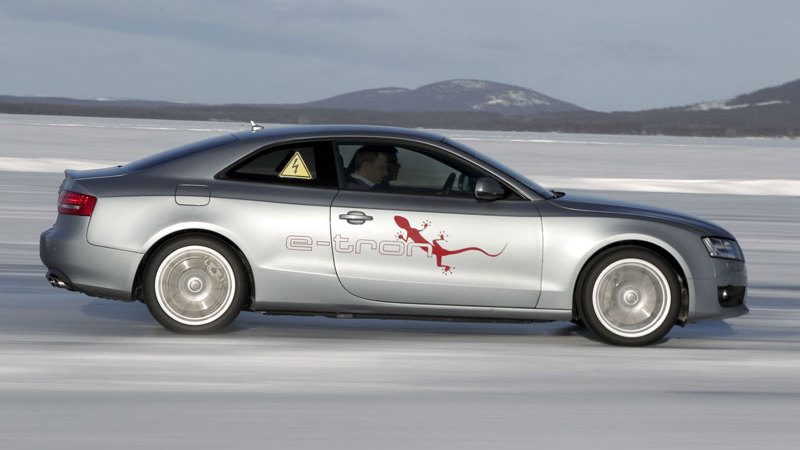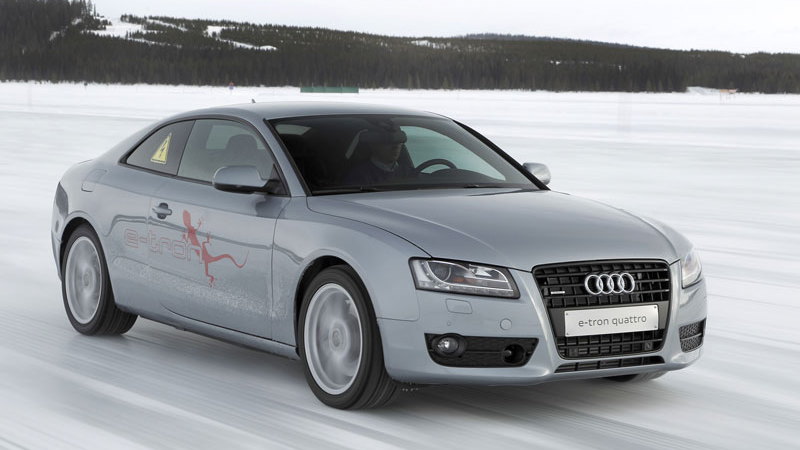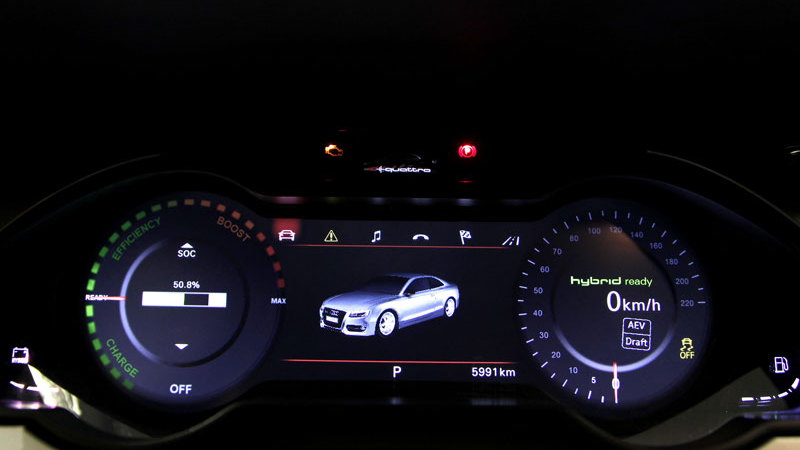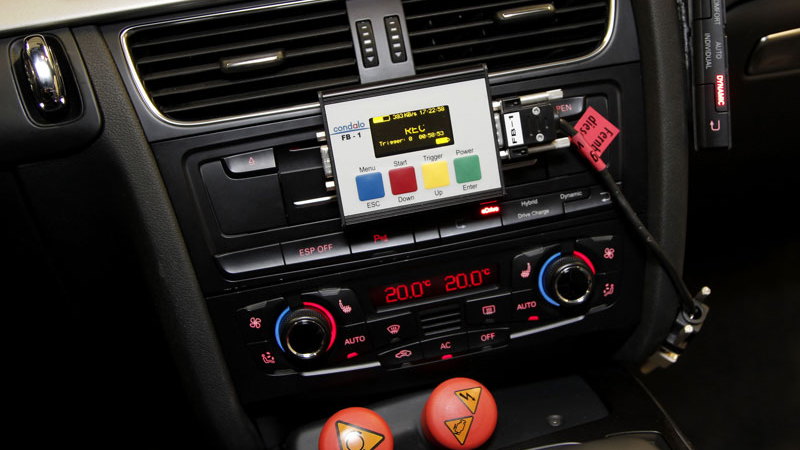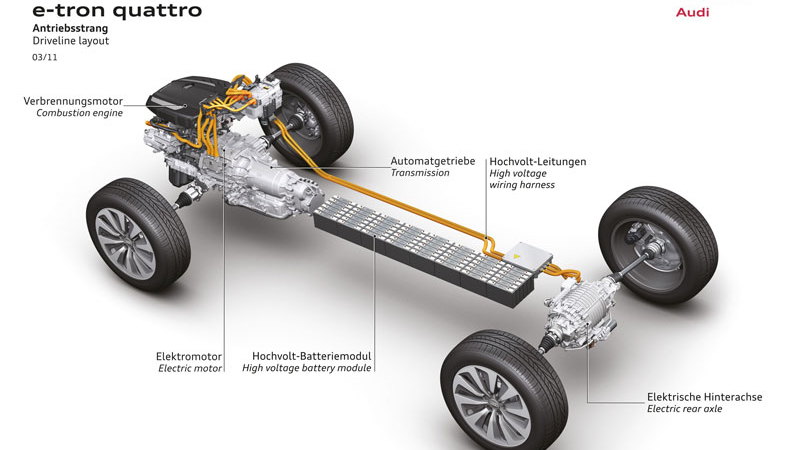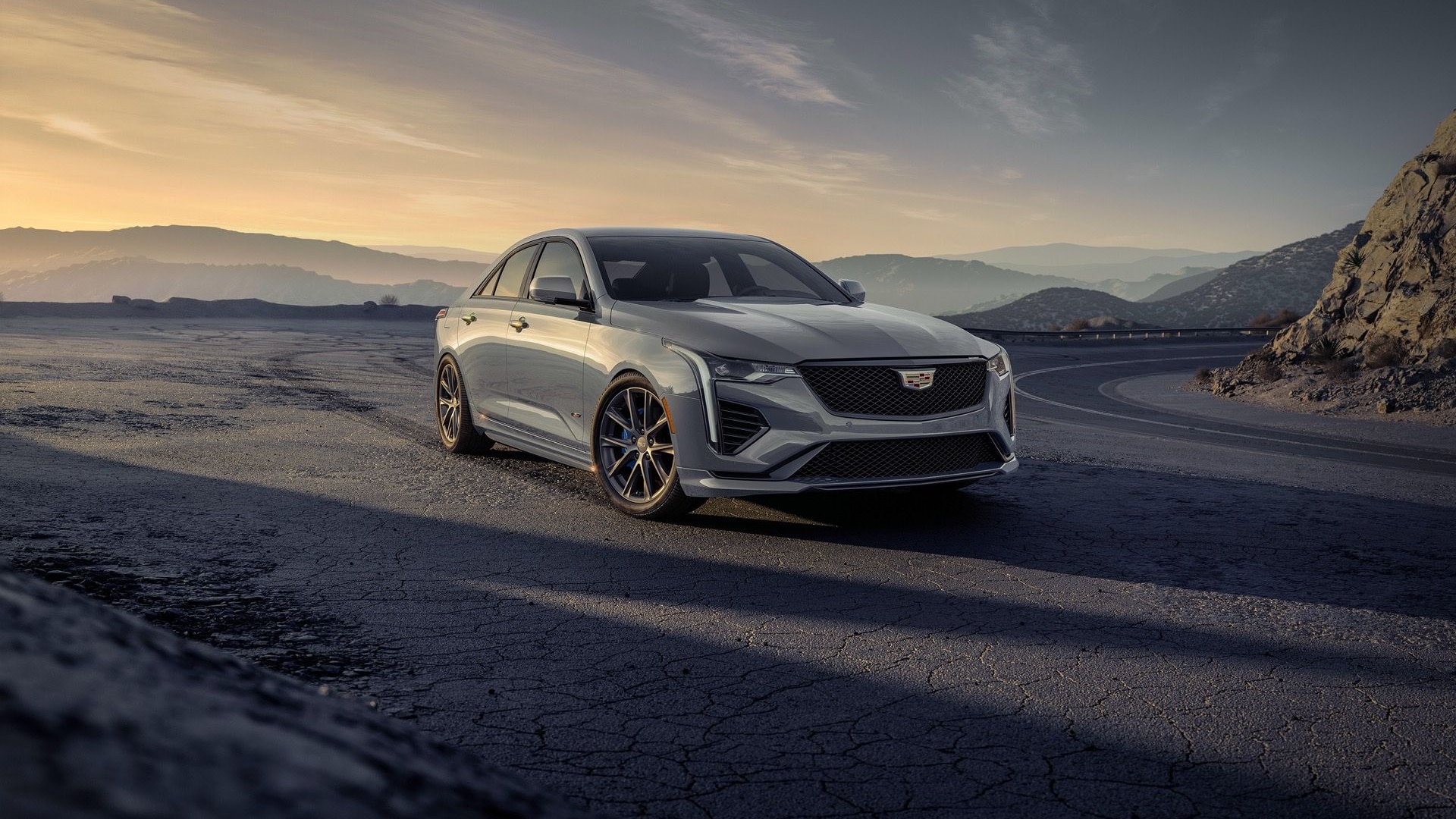By powering two axles instead of one, the innovative drive systems, also known as a ‘through-the-road’ hybrid, offer all-wheel drive capability without the associated heavy weight of multiple driveshafts and gearsets typical of most all-wheel drive vehicles.
Not surprisingly, several major automakers are flocking to the technology, the leader being France’s PSA Peugeot Citroen, which will be launching the world’s first diesel-electric hybrid complete with a through-the-road system in the form of the new Peugeot 3008 HYbrid4.
Audi, too, is investigating the technology, previewing an A5 prototype fitted with a similar setup. Falling under its e-tron division for development of electrified cars, the new A5 e-tron quattro is only a prototype but it shows the expanded direction Audi is taking for its next-generation of cars.
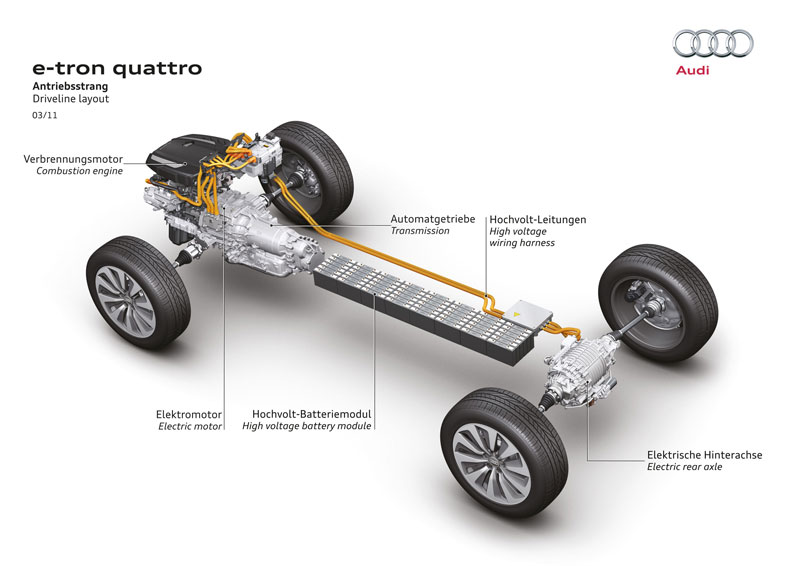
2011 Audi A5 e-tron quattro hybrid prototype
In the rear is a second electric motor, this one with 81 horsepower and 221 pound-feet, which drives the rear axle. Note that this motor is only used when additional acceleration is required or if sensors at the wheels detect a loss of traction. Both electric motors, however, can also be used to recover brake energy when the driver hits the brakes in order to top up the car’s lithium-ion battery pack.
The story doesn’t end there. The prototype can also be plugged into a regular household power outlet to charge up the batteries. Once fully charged, an electric only driving range of 40 miles is possible at speeds of up to 62 mph. If increased range or performance is needed, the driver need only keep his or her foot on the pedal and the internal combustion engine will kick in.
Of course, all of this extra technology adds weight so engineers have used more lightweight aluminum and carbon fiber to shed some pounds. Thanks to their efforts the prototype tips the scales at around 3,500 pounds, which is about the same as the all-wheel drive A5 fitted with just the 2.0-liter TFSI engine.
As mentioned, this is only a prototype and any production release would still be years away--at the earliest.
____________________________________________
